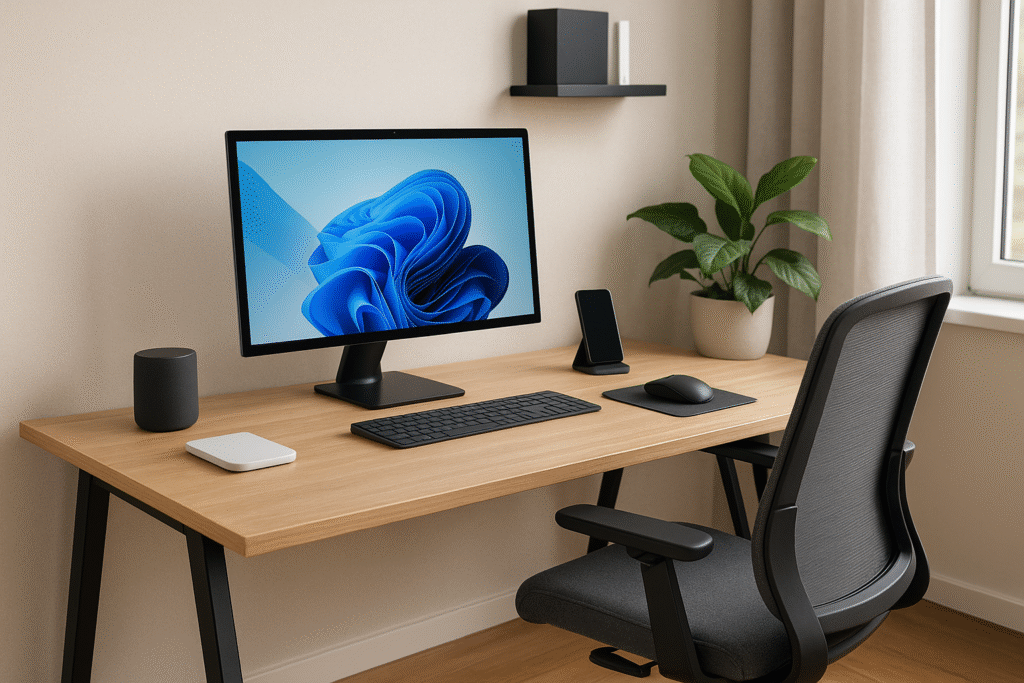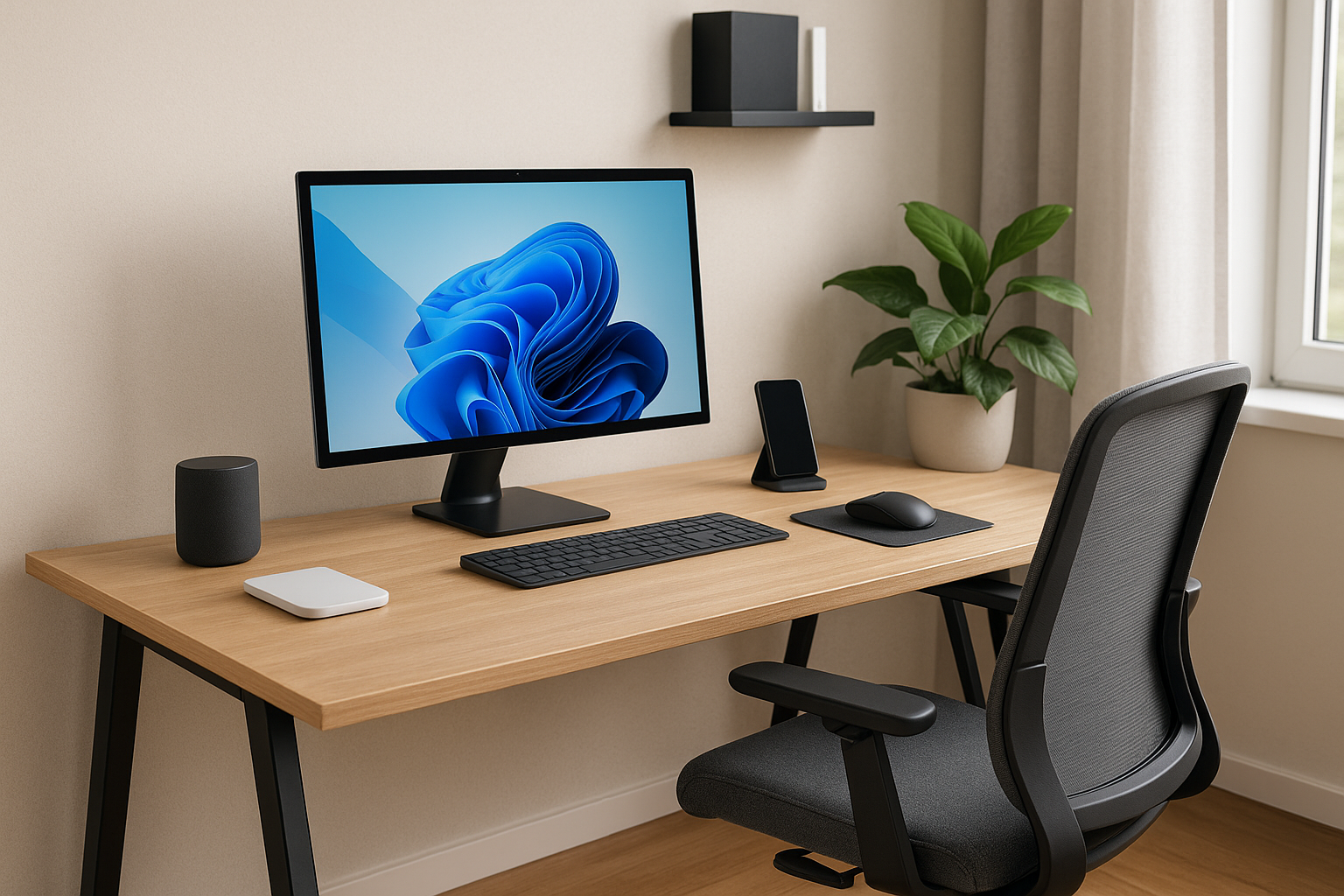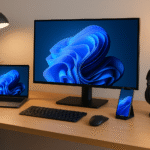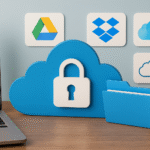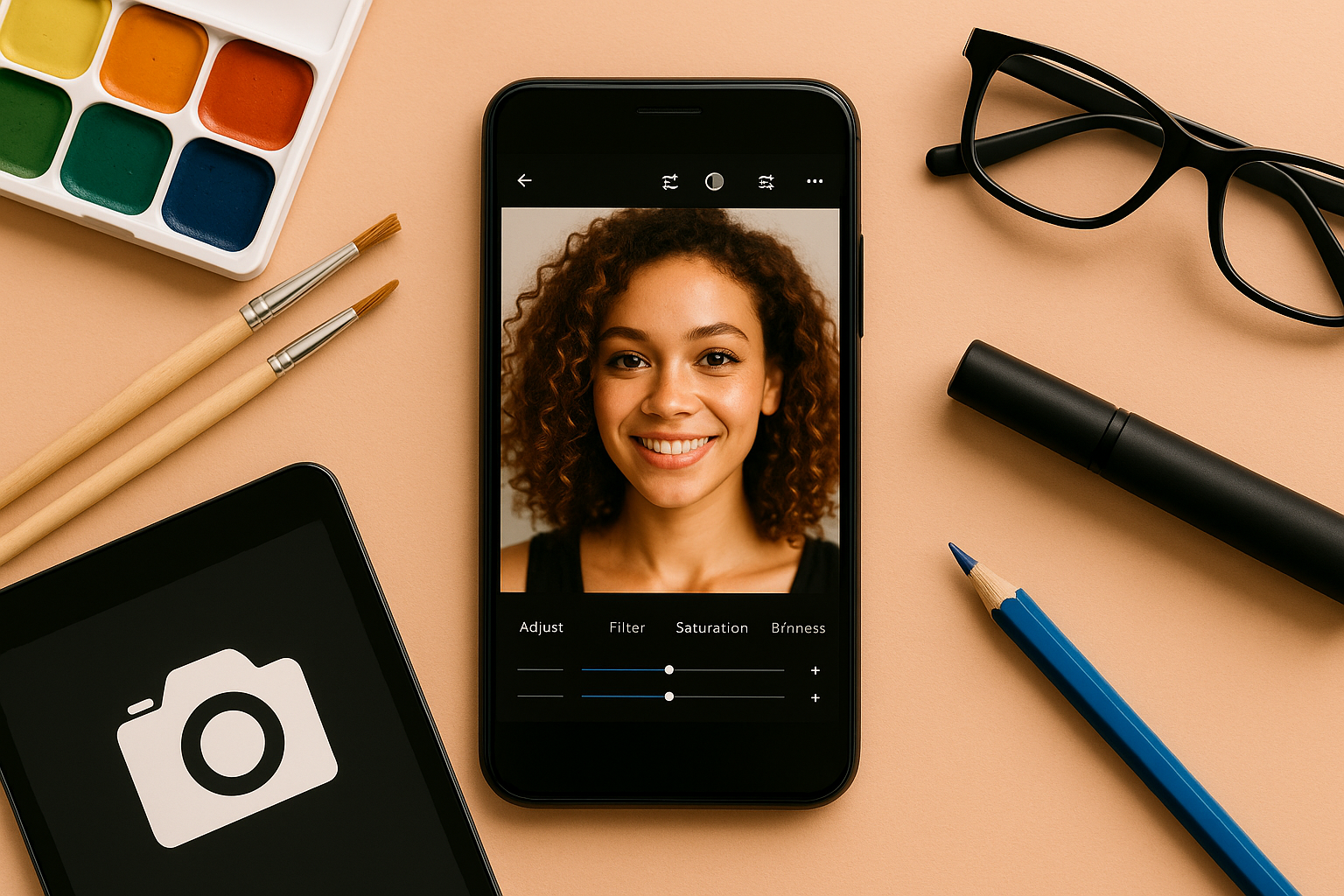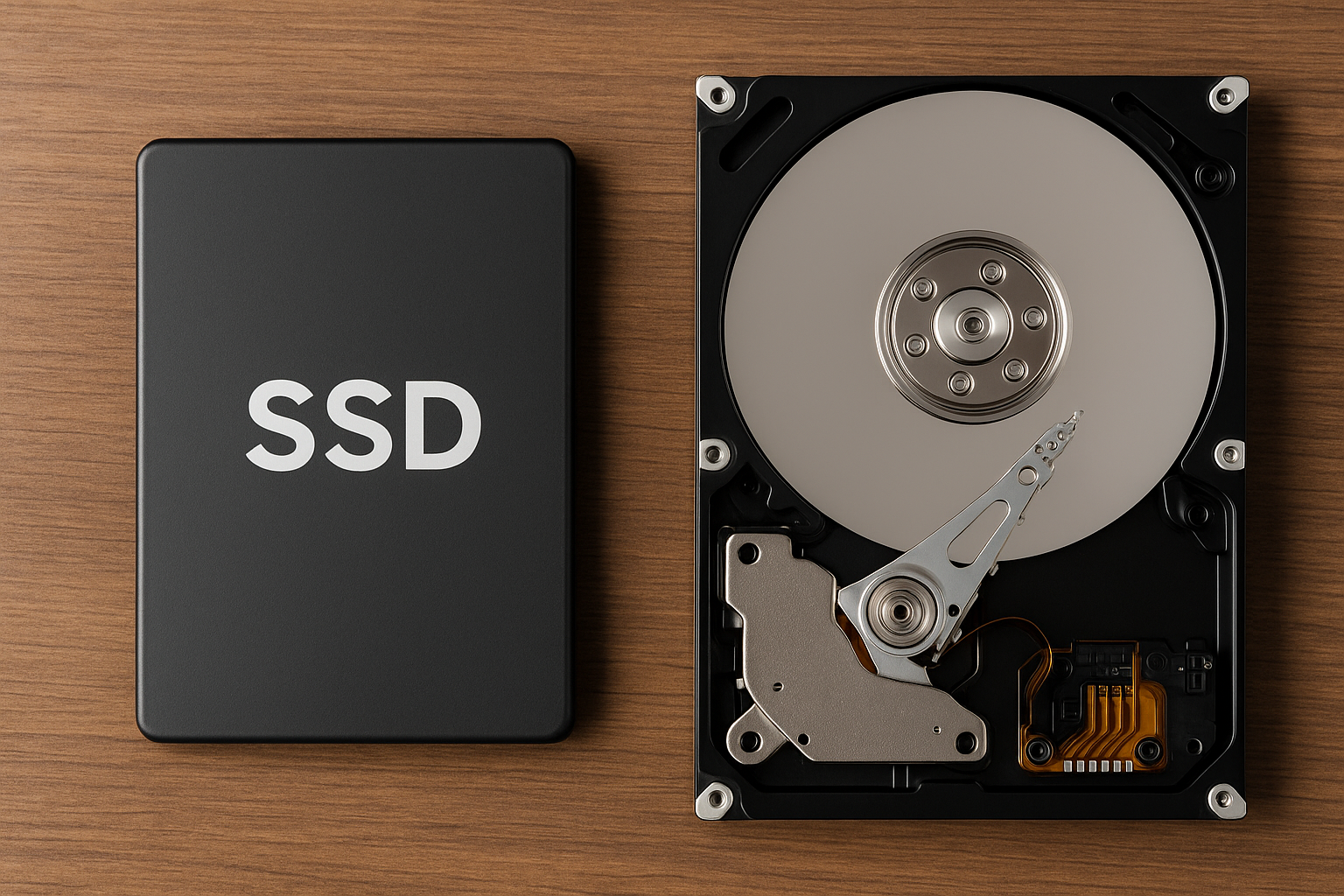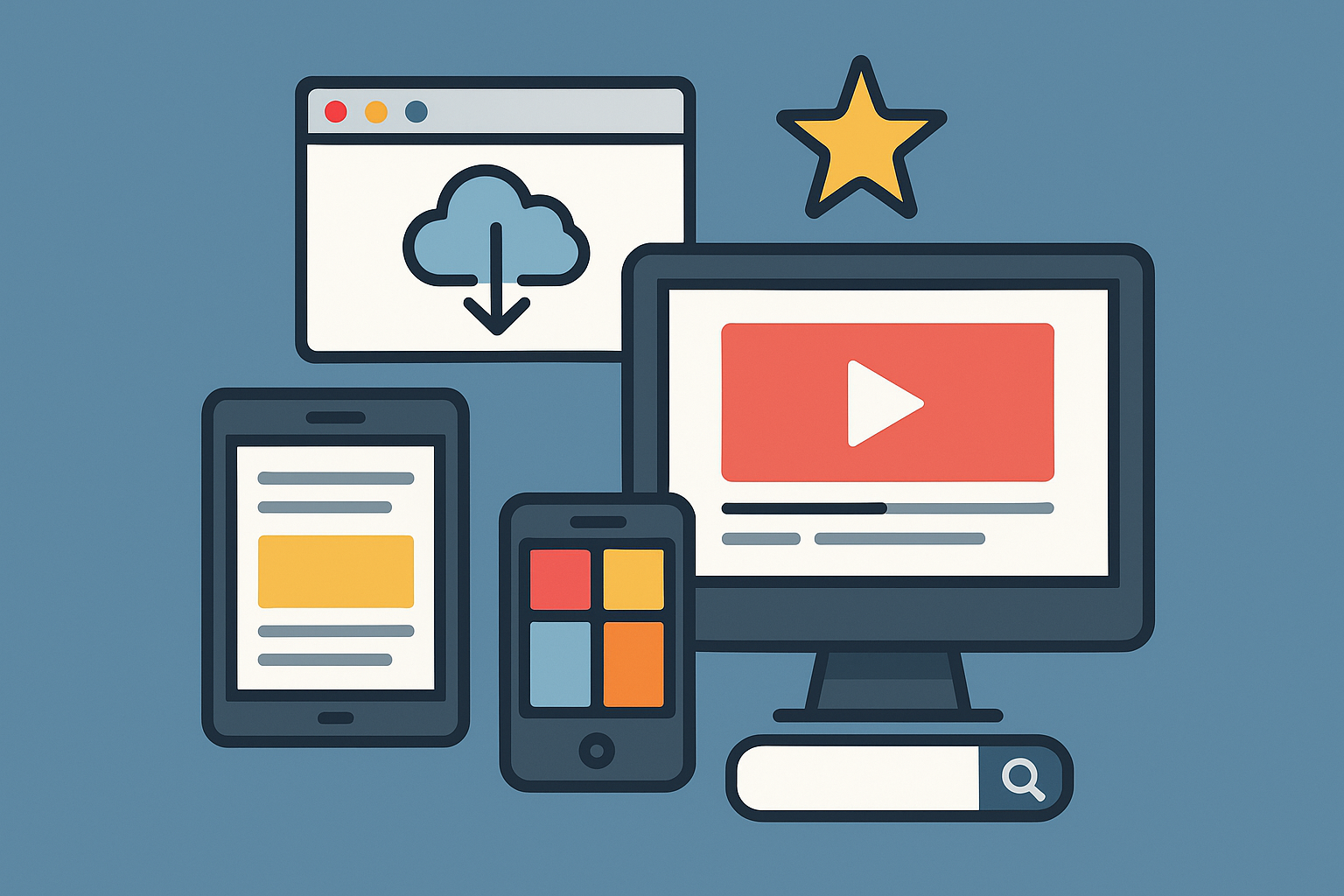In today’s digital age, more people are working from home than ever before. Whether you’re a freelancer, remote employee, entrepreneur, or simply want a space to manage personal projects, having a well-organized, tech-savvy, and functional home office is essential for productivity, creativity, and comfort.
This guide will walk you through everything you need to know to create a workspace that works for you—featuring smart tech, ergonomic design, cable management, productivity tips, and budget-friendly suggestions.
Why a Smart and Functional Home Office Matters
A home office is more than just a desk and a chair. It’s your personal productivity zone. A poorly set-up space can lead to distractions, discomfort, and reduced efficiency. On the other hand, a well-equipped and organized office enhances focus, reduces fatigue, and even boosts creativity.
A tech-savvy office also ensures seamless communication, better performance, and faster workflows.
Step 1: Choose the Right Space
Not every home has a dedicated office room, but that doesn’t mean you can’t create a functional workspace. Here’s how to choose the best spot:
- Look for a quiet area with minimal foot traffic.
- Ensure there’s adequate lighting, preferably natural light.
- Avoid working on beds or couches for long hours.
- Use room dividers or curtains to define the office space in shared areas.
Step 2: Invest in a Comfortable and Ergonomic Setup
Your health matters. An ergonomic setup reduces strain on your neck, back, and eyes.
Essentials:
- Ergonomic chair with lumbar support
- Adjustable desk (standing desks are a great bonus)
- Monitor at eye level to prevent neck strain
- Keyboard and mouse at elbow height
- Footrest to keep feet flat and posture aligned
If on a budget, consider using:
- Monitor risers (or even books)
- Seat cushions or lumbar pillows
Step 3: Choose the Right Desk
Your desk is the command center of your office. Consider:
- Size: Should fit your tech without cluttering
- Material: Wood, metal, or laminate depending on style
- Storage: Drawers or shelves for accessories
- Cable management holes: To reduce visible wires
For compact spaces, use wall-mounted or corner desks.
Step 4: Equip Your Office with the Right Tech
A home office should support your digital needs efficiently.
Basic Tech Checklist:
- Laptop or desktop with fast processing power
- External monitor (or dual monitors for multitasking)
- Keyboard and mouse (wireless preferred)
- Printer/scanner combo (if needed)
- Smartphone stand or docking station
High-Tech Additions:
- Smart speakers (Google Nest, Alexa) for voice commands and reminders
- Wireless charging pads
- USB hubs for expanded connectivity
- Wi-Fi extender to boost internet in remote areas
Step 5: Get the Best Internet Setup
Reliable internet is non-negotiable for a home office.
- Use Ethernet for a more stable connection.
- Upgrade to at least 100 Mbps if working with large files or video calls.
- Consider a mesh Wi-Fi system for large homes.
- Have a backup mobile hotspot ready in case of outages.
Step 6: Perfect Your Lighting
Lighting affects mood, energy, and eye strain.
Tips:
- Maximize natural light from windows
- Use LED desk lamps with adjustable brightness and color temperature
- Install ambient lighting like floor lamps or wall-mounted lights
- Consider smart bulbs that you can control with apps or voice assistants
Avoid overhead fluorescent lights that cause glare.
Step 7: Organize Your Cables
Tech brings wires, and wires bring mess. Keep things tidy with:
- Cable clips and ties
- Under-desk trays for power strips
- Velcro straps for bundling cords
- Cable sleeves to combine multiple wires
Label each plug or cord to save time troubleshooting later.
Step 8: Set Up for Video Calls and Streaming
If you take part in virtual meetings, your camera and audio setup matters.
Improve Your On-Camera Presence:
- Use a 1080p or 4K webcam
- Position the camera at eye level
- Place a ring light behind your screen
- Use noise-canceling microphones or headsets
- Create a clean, distraction-free background (or use a green screen)
Step 9: Design for Productivity and Inspiration
Make the space both functional and motivating.
Elements to Include:
- Whiteboard or corkboard for planning
- Plants to improve air and reduce stress
- Art or posters that inspire
- Bookshelves for easy access to references
- Daily planner or journal for focus
Keep your desktop clear, with only frequently used tools in reach.
Step 10: Add Storage Solutions
Clutter kills productivity. Use storage to keep your space organized.
- Desk drawers or rolling carts for stationery and tech gear
- Floating shelves to save floor space
- Filing cabinets or portable document holders
- Digital storage (cloud backups, external drives)
Minimalist setups often work best for small spaces.
Step 11: Create Zones for Different Tasks
If possible, divide your space into small functional areas:
- Work zone: Desk, tech, and monitor
- Break zone: A chair or bean bag for relaxation
- Creative zone: Space for drawing, brainstorming, or reading
Switching zones helps reset your brain and reduce burnout.
Step 12: Soundproof for Focus
Noise can destroy concentration. Improve your audio environment with:
- Noise-canceling headphones
- Foam panels on walls or ceilings
- Heavy curtains to reduce outside noise
- White noise machines or apps
Even a thick rug can dampen sound if your office has hardwood floors.
Bonus: Smart Tools for a Smarter Office
Upgrade with smart features:
- Smart plugs: Control devices remotely
- Motion sensors: Automate lights
- Smart thermostats: Adjust temperature for comfort
- Virtual assistants: Manage calendars, tasks, and playlists
These tech additions make your office feel modern, responsive, and efficient.
Final Thoughts: Your Perfect Workspace Is Possible
Creating a home office that’s both tech-savvy and functional doesn’t require a massive budget—just smart planning and intentional choices. By combining comfort, technology, and organization, you can build a workspace that helps you focus, stay healthy, and perform at your best.
Whether you’re designing from a spare bedroom or carving out a corner in your living room, this setup can be tailored to suit your workflow and style.
